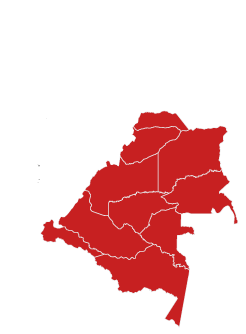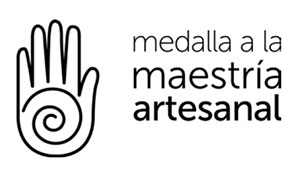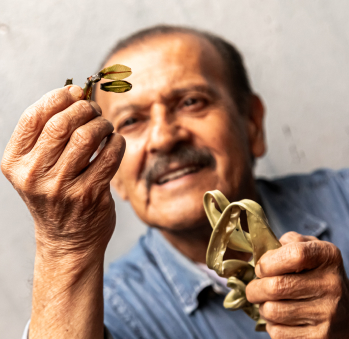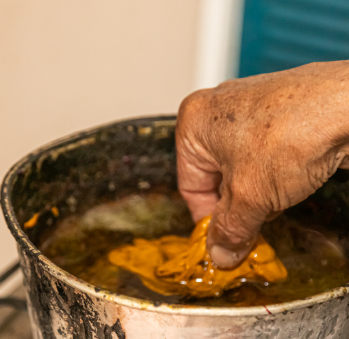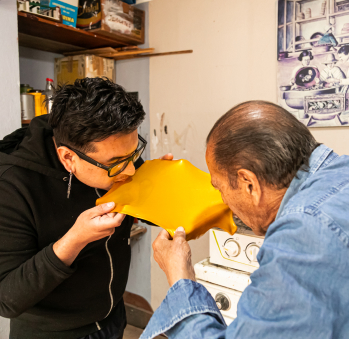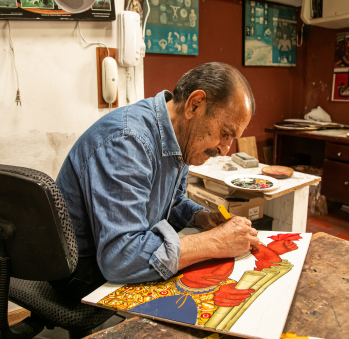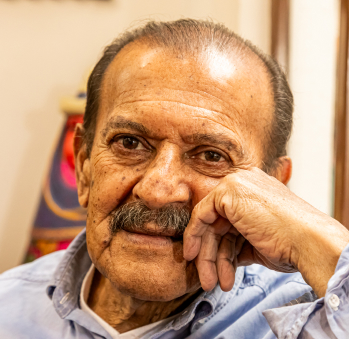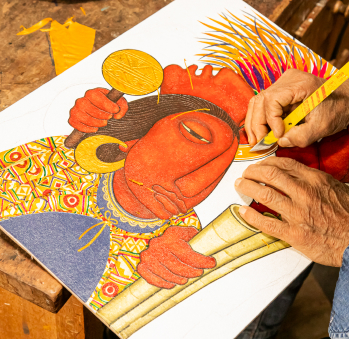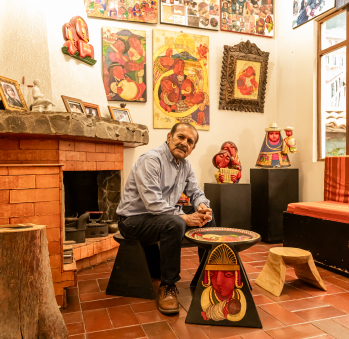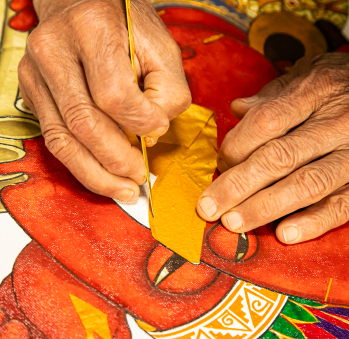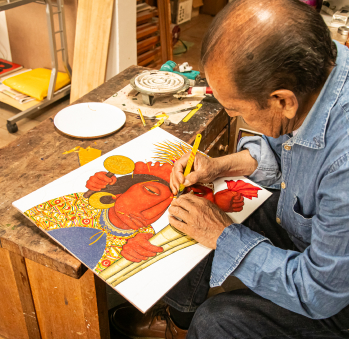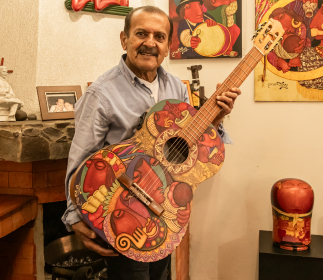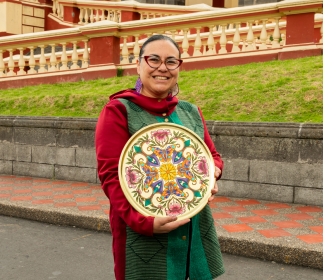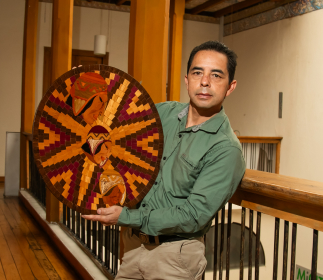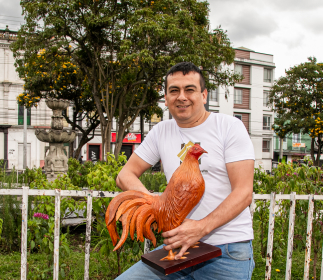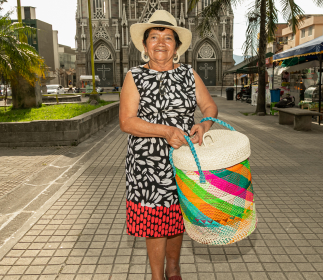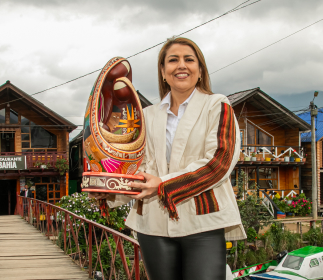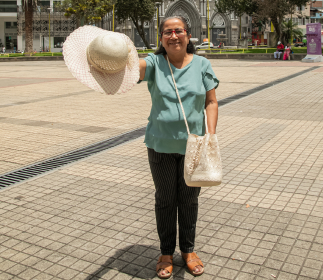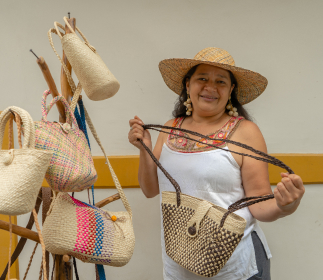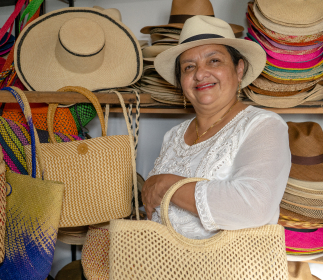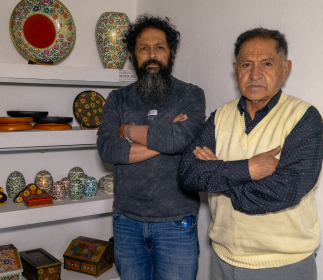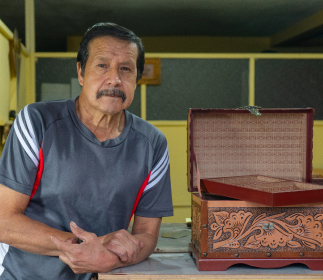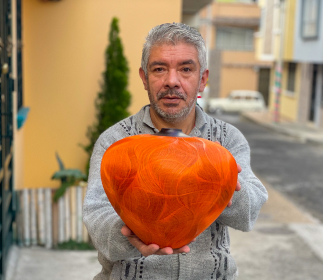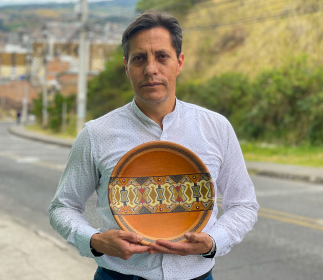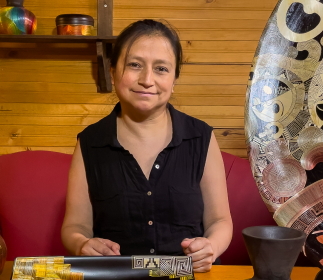Eduardo Elias Muñoz Lora
Al oficio del Maestro Eduardo Muñoz Lora lo precede una larga tradición artesanal. Mucho antes de la conquista, los habitantes del sureste de Colombia ya extraían el barniz de las hojas del mopa-mopa, un arbusto que crece en las selvas del Putumayo y Caquetá. Luego de la llegada de los españoles a Pasto, a los indígenas que manejaban la técnica se les empezó a encargar que decoraran cofres con los escudos de sus familias, borlas, oro y plata. Las piezas tuvieron, por mucho tiempo, dibujos de paisajes europeos y japoneses, animales y construcciones que no pertenecían a estas tierras.
Siendo consciente de la historia del oficio, y con unas enormes ganas de explorar el material, el Maestro Muñoz Lora se decidió, en 1974, a empezar su carrera artística usando el barniz de Pasto como medio. Sentía que había todo por hacer. De joven, se había formado en el taller del Maestro barnizador José Francisco Torres. Después había estudiado en la Escuela de Bellas Artes de la Universidad de Nariño, y había trabajado en diversas labores, desde pintor de casas hasta ascensorista en Bogotá. Para cuando regresó a Pasto y se casó con Graciela Martínez, ya estaba encaminado a revolucionar el oficio.
Desde el principio, fue un defensor de la difusión de la técnica. Sabía que, si se quería conservar, hacía falta abrir las puertas de los talleres y compartir el conocimiento en vez de atesorarlo como un secreto. Además, quería encontrar un tema que no hubiese sido importado, un tema propio. Se aventuró por primera vez en 1976, cuando Artesanías de Colombia lo invitó a participar en la semana colombiana en París, y cambió las tradicionales superficies planas sobre las que se trabajaba por piezas en relieve de patos y pavos reales, que barnizó con sus plumas características. Narra el evento como todo un atrevimiento, pues hasta entonces ningún barnizador usaba bases de madera con volúmen. A él, eso le parecía un sinsentido, pues las láminas de barniz se estiran y amoldan a las superficies tal y como lo haría un plástico.
Le rondaba la pregunta sobre por qué los artesanos seguían representando motivos que no eran de aquí sino de Europa, México, Perú y Ecuador, habiendo tantas cosas bonitas en su región. Entonces, de la mano de los talladores, empezó hacer vírgenes campesinas, cucharas de palo y ñapangas con sus trajes típicos, los mismos que veía de niño cuando bajaban al mercado de los sábados. Encontró su inspiración en la cosmovisión de las culturas de Nariño y sus alrededores, los Pastos, Awás e Incas. Le apasionaban sus rituales, leyendas y vestimentas. La adoración al sol se volvió un motivo recurrente en sus piezas, así como el sol de los Pastos y sus ocho puntas.
La historia sería otra si no hubiera contado con el apoyo de su esposa, Graciela, a quien recuerda con cariño por haber sido ella, con sus ocho sentidos y conocimientos en la cocina, quien le ayudó a perfeccionar la técnica para limpiar las hojitas del mopa-mopa y conseguir un barniz prácticamente transparente. Gracias a ese barniz impecable, el Maestro pudo solucionar de raíz el mayor reto que enfrentaba su práctica artística: hacer sombras, luces y transparencias con un material tradicionalmente opaco. Mezclando el barniz con pigmentos traslúcidos utilizados para tinturar lana, consiguió el efecto difuminado en las láminas, con lo que le dio volumen y complejidad a sus dibujos. Así se constituyó su estilo característico: los rostros de narices alargadas y pieles rojas de sus personajes indígenas, y todas sus costumbres. El Maestro ha representado con amoroso detalle el maíz de sus chagras, sus instrumentos musicales, fiestas, adornos, banderas, ropas, símbolos, tejidos y soles. En sus escenas destaca, también, el paisaje; no faltan los verdes de Pasto ni los volcanes Galeras y Cumbal.
Durante los más de cincuenta años que lleva en el oficio, su trabajo le ha traído múltiples alegrías y reconocimientos, entre los que se cuentan la Medalla de la Orden de la Maestría Artesanal, el Reconocimiento de de Excelencia UNESCO, y el reconocimiento a Maestro de Maestros en Pasto. Recuerda con orgullo su participación en el concurso mundial de Lacas en Japón, a finales de los ochenta, donde aprendió de los materiales orientales y pudo apreciar aún más su material pues, a diferencia de las lacas extraídas de la leche de los árboles en Japón, China y Rusia, el barniz de pasto es el único que se extrae de las hojas jóvenes de un arbusto. Para el Maestro, el artesano goza con lo que hace, y él, sin duda, ha sabido aprovechar la fortuna de hacerse un camino dedicado al oficio que sigue practicando y amando como en sus primeros años.
Artesanías
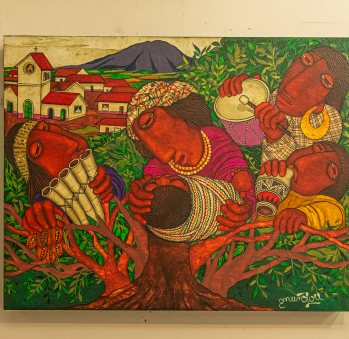
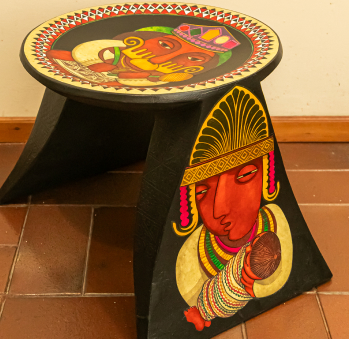
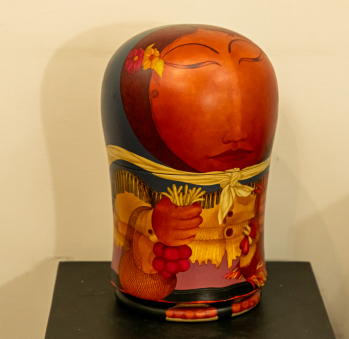
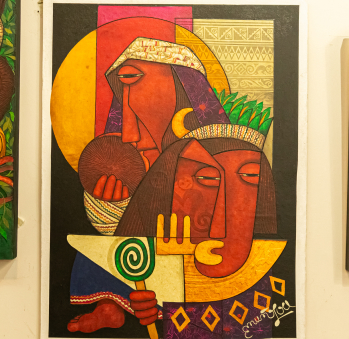
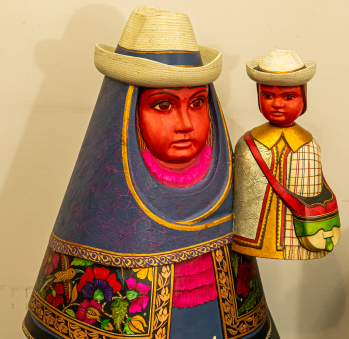
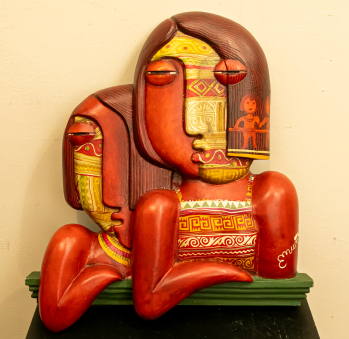
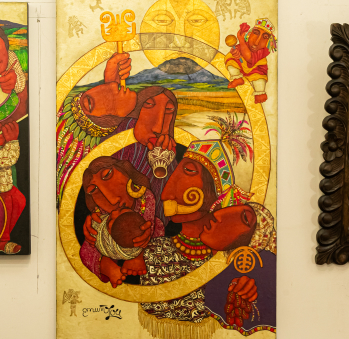
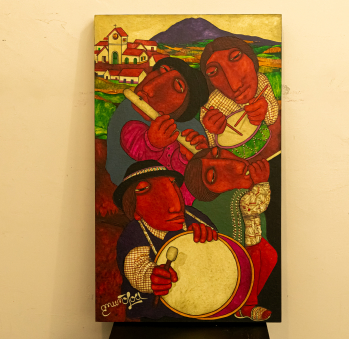








Artesanos de la ruta
Artesanos de la ruta
No puede copiar contenido de esta página

